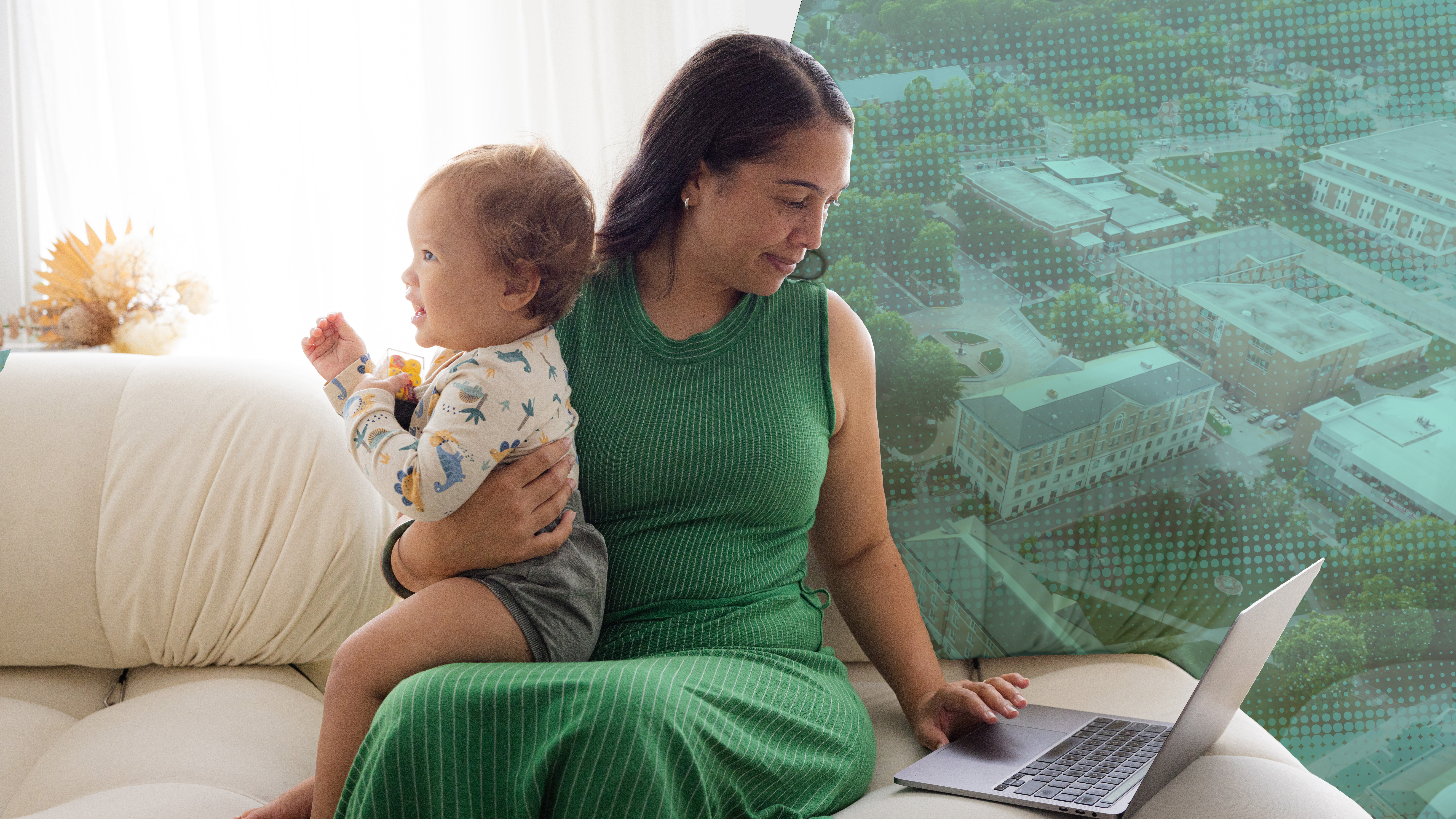Working-age women are more than 10 percentage points less likely to have a job than working-age men. But this gender job gap isn’t true across the board. It’s entirely driven by choices parents make after having children.
Among those aged 25–54, single women without children are equally as likely as single men to work (or be seeking jobs) and have been for decades. A gender work gap appears among those who are married, parents, or both. In either case, men are more likely to be in the labor force, and women are less likely (Figure 1).
This gap is largest among married couples with children, where men are substantially more likely to be in the labor force than women. More than 90 percent of married fathers work, compared with less than 75 percent of married mothers.
That marriage and children are associated with men working more and women working less are long-established research findings.
“In the labor market, men with children are given prizes because employers see them as responsible, dependable family men, and women with children are dinged because they’re seen as not being able to be dedicated to the job,” said Misty Heggeness, a professor at the University of Kansas and past visiting scholar at the Minneapolis Fed’s Opportunity & Inclusive Growth Institute.
Some of this employment gap is driven by a pre-existing income gap. In opposite-sex households, the male partner is more than twice as likely to be the top earner. That means if the lower-paid partner stays home, statistically speaking it’s probably the woman in an opposite-sex household.
This article is the latest in a Minneapolis Fed series analyzing U.S. labor force participation and the overlapping forces that influence who works for pay, who does not, and why. Previous entries have laid out the basic statistics, analyzed America’s aging workforce, and explored the country’s millions of full-time caregivers. This article explores how marriage, children, and education are driving people’s work decisions.
Money, marriage, and whether to stay home
It’s not surprising that full-time caregivers are more common among married couples. One partner’s income can keep paying the bills if the other stays home. More than 90 percent of full-time caregivers are either married or cohabitating.
But getting by with one income can be difficult for families in a world where two-income households are the norm. When Nicole Schoonover of Andover, Minnesota, left her job to care for her child, it torpedoed her family’s finances.
“We were homeless for a little bit because we didn’t have too much money,” Schoonover said.
Schoonover’s dilemma was stark. While she enjoyed her old job working in an animal shelter, it didn’t pay very much. Faced with the costs and stress of being a working parent, Schoonover decided it was better to leave her job and handle child care herself.
Education increasingly influences stay-at-home choices
For women in particular, the data suggest one factor increasingly explains decisions to keep working or stay home after having kids: education.
Two decades ago, mothers with and without college degrees were about equally likely to stay at home—among women aged 25–54, around 19 percent of college-educated mothers and 18 percent of mothers without a college education were full-time caregivers.
But since 2001, these two groups have diverged steadily. Over that time, college-educated mothers have been increasingly likely to work full time and slightly less likely to be full-time caregivers. Among moms without college degrees, the opposite is true: They’re slightly less likely to work outside the home and more likely to be taking care of family (Figure 2).
Heggeness said data show many women without college degrees are less “attached” to the labor market than women with degrees.
For example, contrast Schoonover’s position with that of Sara Venhuizen of Sioux Falls, South Dakota. Like Schoonover, Venhuizen and her husband had to decide whether one of them would stay home. But Venhuizen wasn’t working an entry-level job. She had an advanced degree and a job as an electrical engineer. That was something she wasn’t willing to discard, even though it was important to her to be there for her young children.
So Venhuizen found a compromise: She dropped back to part time at her job. “It was really clear to me that I was not going to get promoted” while part time, Venhuizen said, but it kept her active and engaged.
“I didn’t want to go completely to being a stay-at-home parent, because I didn’t want to become irrelevant in my technical field,” said Venhuizen.
Mothers of all education levels are more likely to work than to be full-time caregivers. But the ratio grows starker as education increases. Mothers without a college education are 2.6 times more likely to work than to care for family full time, while mothers with college education are around 5 times more likely to work. Mothers with graduate education are 9 times more likely to work (Figure 3).
Fathers of all education levels are overwhelmingly more likely to work than to care for family, with only around 1 percent of all fathers being full-time caregivers. Even fathers with no college education—the likeliest of all groups to be caregivers—are 60 times more likely to work, while fathers with college education are over 100 times more likely to be on the job than stay home.
Kyle Wardin of Edina, Minnesota, recently left a demanding job in software sales to stay home with his young daughter. While he said people his age largely understood, he met more pushback from older people.
“It was hard for people like my parents and my parents’ friends to wrap their head around it,” Wardin said.
But Wardin, like other stay-at-home parents of both genders interviewed by the Minneapolis Fed, and like a majority of stay-at-home parents in national surveys, said he found the experience rewarding.
“More dads should do it,” he said. “It really kind of gives you a different perspective.”






